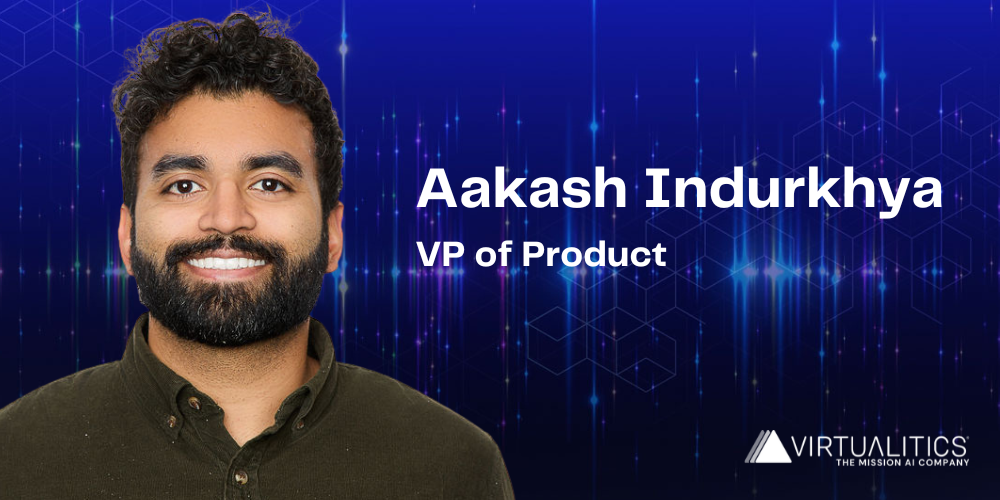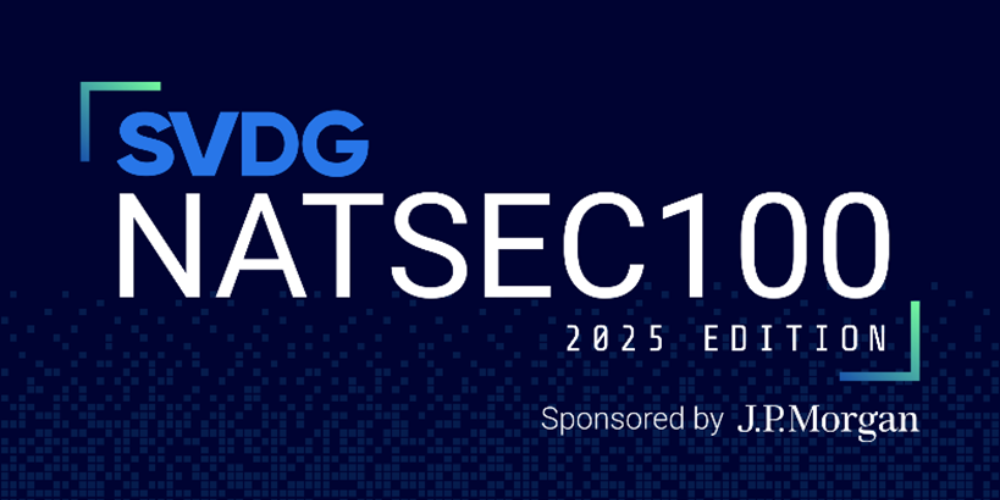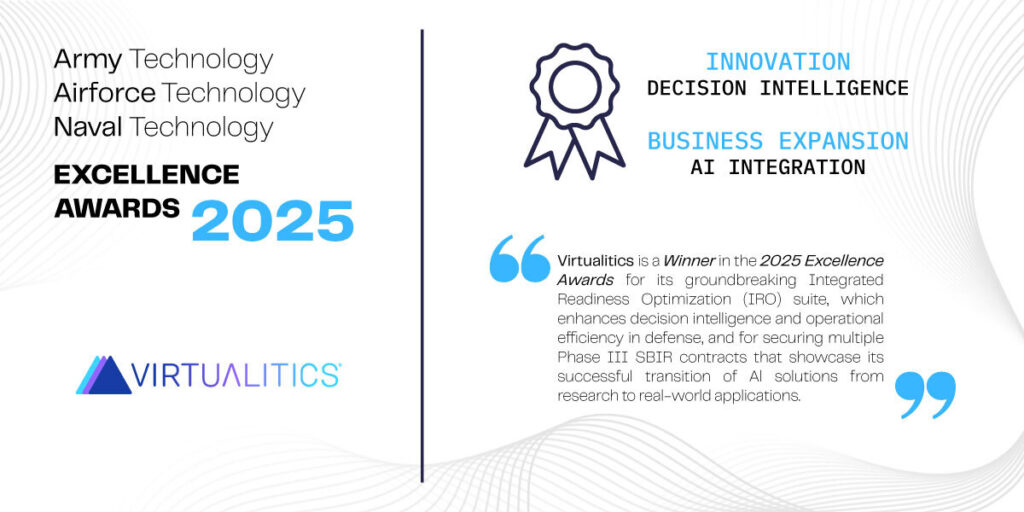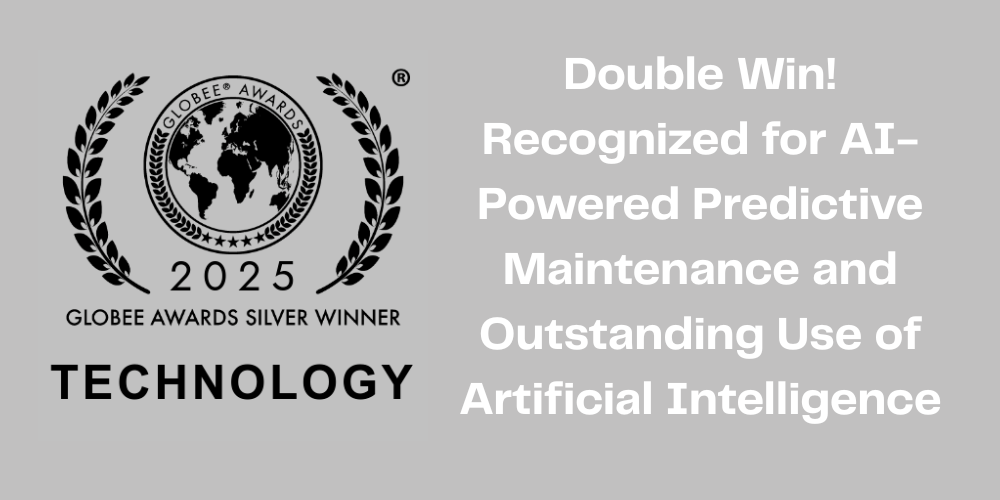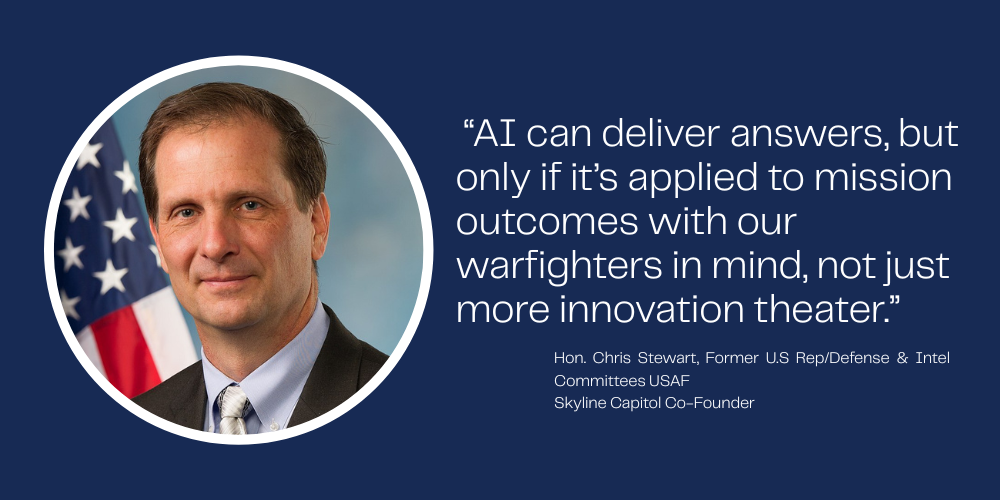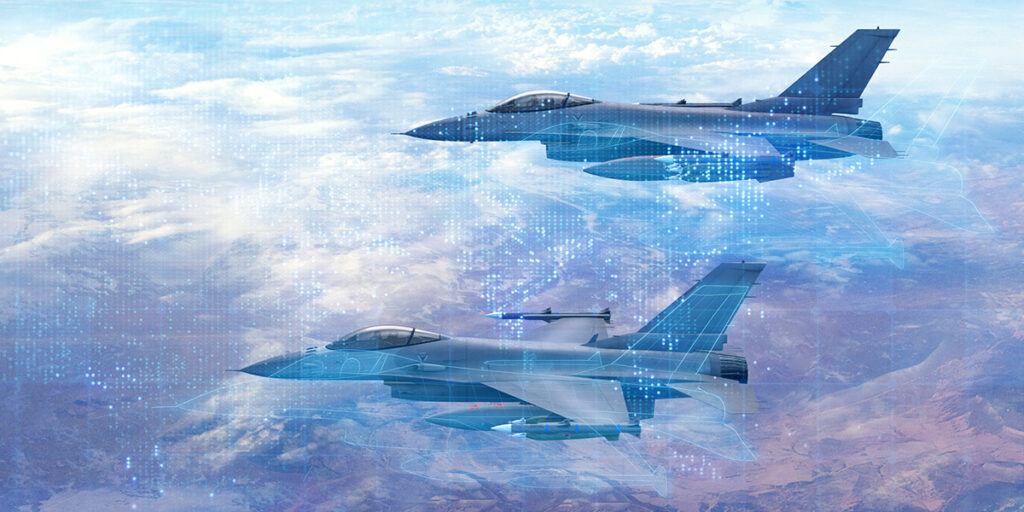This series dives deeper into how advanced analytics technology augments human-decision making, operationalizing mission insights to drive readiness at speed and scale throughout defense organizations.
When it comes to readiness in the DoD, the problem isn’t a lack of data—it’s figuring out what truly matters in time to act.
Modern sensors, data systems, and platforms generate and track massive amounts of information every day. But sorting through terabytes of unstructured, siloed, or incomplete data to make mission-critical decisions remains a struggle, even for the most seasoned analysts and decision-makers.
And while AI applications have emerged as powerful tools for finding signals in the noise, they’re only part of the solution for data-driven decision-making. Whether using traditional machine learning or advanced natural language processing, AI applications excel at generating insights. However, the journey from raw data to a confident decision often remains fraught with friction.
The reality is that, even though using AI means that analysts and decision-makers are no longer overwhelmed by millions of raw data records, they’re instead overwhelmed by hundreds of AI-generated insights. While these insights help reduce the sheer volume of information, finding the insight you need when you need it is still a daunting task.
Bridging the Insight Consumption Gap
What’s truly needed is an interface as nuanced and dynamic as the complex situations that decision-makers face.
It’s a common misconception, particularly in demanding industries like defense, that simply presenting insights as charts, tables, or infographics makes them easy to consume. This assumption is a trap. The actual takeaway can be easily misinterpreted. Multiple insights often interact simultaneously, and discerning which ones are relevant can significantly hinder progress.
This fundamental challenge of insight consumability is a deeply human problem. It extends beyond merely generating accurate data points; it’s about ensuring those insights are accessible and actionable within the fast-paced flow of critical decision-making.
At Virtualitics, we believe that pairing an LLM-generated explanation with clear links back to the AI application—highlighting evidence and interpretation—will significantly increase the likelihood of users being able to consume and leverage insights, and, in turn, enable true data-driven decisions.
To bridge the consumption gap, we only have to turn to a solution that’s already been widely adopted into our personal lives—chat interfaces powered by AI agents.
Why Do AI Agents Help?
While these chat interfaces offer a compelling path to solving the insight consumability challenge, their successful implementation—particularly in high-stakes environments—isn’t straightforward.
Generative AI systems are different from ML and NLP, which are excellent at executing predefined workflows, especially for fixed tasks. GenAI, specifically agentic AI,is defined by a greater level of autonomy and staying adaptive, while maintaining alignment with user provided guidance and intent.
And user intent is critical in the defense world—leaders know what information they want, but often aren’t sure how to use analytics to find it. Chat interfaces powered by LLM and AI agents can reason through a user’s intentions and get them quickly to the right insight for what they need.
But the GenAI piece alone isn’t enough. The agents do the work of finding the evidence within the data to build trust in the insight and then, explain it to the user. You need both pieces working together to yield proper insight adoption and achieve data-driven decisions at scale.
At Virtualitics, we’ve spent a long time thinking about how to integrate AI Agents into high-stakes defense analytics. Over the last couple of years, much of our focus was on research and carefully monitoring the market reaction (and hype) around GenAI, specifically in the defense industry.
In 2025, we’re moving beyond research and deploying AI agents that are impactful in the near term. As part of this process, we also wanted to highlight some of our observations from the journey that brought us here and a good way to think about this is by looking at the process of decision-making in general (for now, we’ll focus on the ‘observe’ and ‘orient’ portion of an OODA Loop).
Observe and Orient
The actual decision space is something that’s ridiculously big. It encompasses all the tribal knowledge, lived-in experiences, information used in the moment, and all the circumstances that the decision-maker must consider. It’s the type of decision space that’s so overwhelming it leads to gut reactions. There’s a time and place for it, but it’s far from the ideal.
While data management systems—everything from a spreadsheet, standard databases, to well-managed data lakes—provide an observable decision space that narrows the scope of information that’s being considered to just the things that can be measured or documented.
Yes, there’s data to point to now, but unless you know exactly what you’re looking for and how to code that data into an insight, you probably won’t get very far. Most service members don’t have the time or experience with writing SQL queries, running data engineering scripts, and manually filtering through massive databases.
However, once you start leveraging AI applications and advanced analytics capabilities, the decision space feels more approachable, especially for power users.
Our flagship solution, Virtualitics’ Integrated Readiness Optimization (IRO), was built to help address this insight gap. IRO integrates and fuses data from disparate sources—logistics systems, operational readiness reports, personnel data, and more—and transforms them into an analyzed decision space.
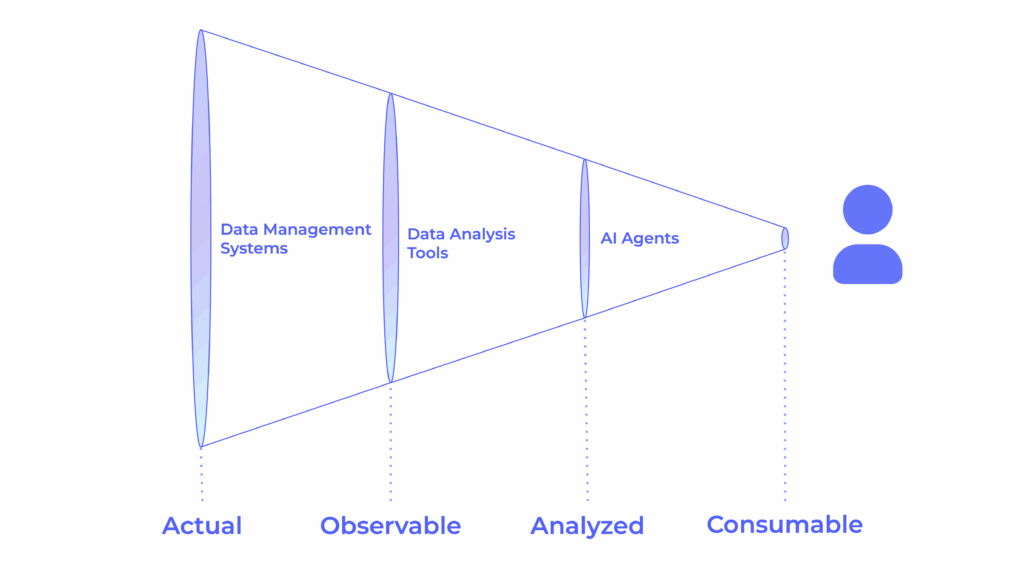
In other words, IRO uses AI to combine information from many different data sources and generate prioritized insights, plots, tables, and figures that can immediately be leveraged to inform decisions.
This is where the opportunity for data and AI to help has really grown. But one major challenge that we and many others still face in this space: users rarely have cookie-cutter questions that are asked the same way or for the same reason.
Even with analyzed data in hand, not every user will know how to interpret a chart or understand which part of a dataset answers their urgent question. Often, the insight that matters most is the one that’s only relevant right now and in a specific context. And, sometimes, users need help translating the data into information that they can take to senior officers and help them quickly digest it for decision-making.
Unlocking Insight Consumability
At Virtualitics, we believe that making insights truly consumable means going beyond dashboards and static visualizations. It’s about creating a direct, intuitive way for users to engage with complex data and the insights it generates—without needing to master a new application or hunt through charts for answers.
That’s why we’ve built a natural language chat interface, powered by LLMs, designed to help users ask questions in their own words and get answers grounded in data. This isn’t just about convenience—it’s about bridging the gap between analyzed data and consumable insight, especially when time and clarity matter most.
Behind the scenes, a multi-agent system works to retrieve, contextualize, and explain insights drawn from across our analytics environment. While each AI agent is purpose-built for specific tasks—like surfacing predictive insights or flagging operational risks—they’re all designed to enhance human understanding, not replace it. Our approach combines the transparency of a conversational interface with the power of task-focused AI agents that stay aligned with the user’s intent.
Consider a readiness officer asking, “Where are we most likely to face equipment shortages in the next 90 days?”
Instead of wading through dashboards or manually combing through reports, the officer gets a focused, explainable response—one that highlights the specific assets at risk, points back to underlying data, and may even suggest next steps like analyzing supply chain dependencies.
By reducing the effort it takes to find and understand critical insights, we’re lowering the barrier to data-driven decision-making across the defense enterprise. And while we know that the needs of a readiness officer, a maintenance chief, or a logistician aren’t the same, we’re working toward a system that can tailor explanations based on a user’s role and context.
Insight consumption doesn’t end with understanding a chart or reading a report. It’s about empowering users to take the next step confidently. While many analytics tools stop at visualization, our solution focuses on helping users interpret, question, and act on insights—all within a secure, explainable environment.
But improving how individuals consume insights is just the start. In Part 2 of this series, we’ll explore how Virtualitics is addressing the next challenge: influencing decisions at the organizational level.

